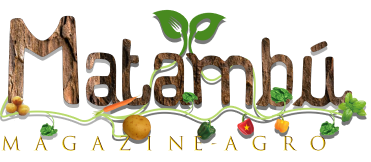[ad_1]
“The global food market is under pressure,” says Shypple CEO Jarell Habets on this weblog. “Wageningen University & Research (WUR) estimates 40% of all food produced is lost. Food waste happens everywhere.”
“Most innovation is done to prevent waste during harvesting or to avoid having to throw away end products. Like with companies such as TooGoodToGo, which pairs consumers with food that’s almost reached its expiration date.”
“So, there’s innovation at the beginning and end of the chain, but very little in the middle. There’s still much to be gained in storage and transportation. In Southeast Asia and Africa, quite a lot of food is lost during processing and storage. Distribution problems are the main concern in Latin America,” says Jarell.
Global transport is a vital hyperlink within the food trade’s future. When transport contemporary produce, quite a few variables come into play: temperature, transit time, container availability, and order processing speeds. Jarell, thus, desires accelerated digital innovation in these key traits.

You must have end-to-end perception
The relentless strain on the world’s logistics community is just growing. Real-time perception into freight is significant, particularly for contemporary merchandise. When transport perishable items, firms must be ready to monitor their shipments in real-time. That not solely speeds issues up but additionally reduces the danger of errors. Shypple helps firms estimate prices, congestion, and lead occasions upfront. That is essential as a result of delays imply the distinction between spoiled fruit or firm income.
Detailed perception at container stage reduces food waste
“You can now see exactly when a container will arrive at a terminal. That helps organizations plan the rest of the transportation. It also speeds up the various inspections which shippers have to schedule. This development results in faster throughput to auctions, markets, or retailers. In short, fresher products,” explains the CEO.
Platforms assuming ‘terminal-watcher’ function
“Until now, it was often unclear if a ship had offloaded a container. Carriers kept an eye on terminals and phoned shippers when their shipment was ready. This manual process meant a disconnected system of Excel sheets, emails, and phone calls. Platforms have assumed this role and offer improved planning control and flexibility.”
It is time to democratize world commerce
“It’s nigh impossible for growers to control their logistics chains, which involves a heap of paperwork. However, digitalization allows them better insight into their goods’ movement and helps them reduce food waste during transportation. It democratizes global trade – more parties can now trade their goods without the fear of wasting products,” continues Jarell.
Container expertise innovation a must
“Fresh produce containers have to traverse the oceans. That creates uncertainty. The smallest deviation can have significant consequences, and even slight adjustments can lead to major losses. More development is needed in the industry, such as improving container insulation, real-time temperature overviews, and remote temperature adjustment.”
From native agriculture to sustainable transport
“Shipping food from another part of the world doesn’t sound sustainable, but neither is growing everything locally. At least, not yet. Until we find a way to grow it all locally, we need a global trading system that can feed the entire world. We must optimize every part of the logistics chain and make it easier for expeditors to minimize their emissions. Digital shippers now offer shipping with sustainable fuels, reforestation, carbon extraction, or a combination of these. The future is green if we work as a team,” concludes Jarell.
For extra info:
Hanna Steenstra
Shypple
Email: h.steenstra@shypple.com
Website: www.shypple.com
[ad_2]
Source link










